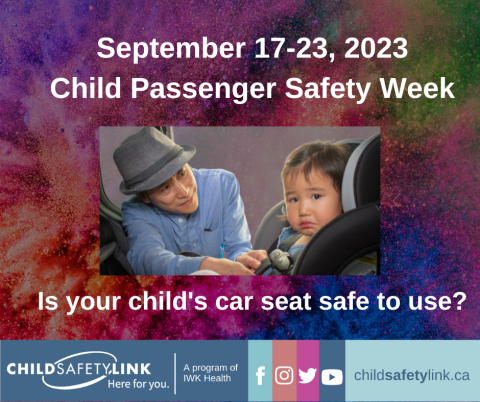This Child Passenger Safety Week: Is your child’s car seat safe to use?
Parents and caregivers are asking asking questions about their child's car seat or booster seat because the facts speak for themselves: motor vehicle collisions are a leading cause of death in children, and when used correctly, a safe car seat or booster seat reduces the risk of fatal injury by up to 71%.
For Child Passenger Safety Week (Sept, 17-23) this year, Child Safety Link (CSL) is helping parents and caregivers better understand which seats are safe to use and how to use them correctly to keep their children safe. The theme for this year’s campaign is “Is Your Child’s Car Seat Safe to Use?”
According to Katherine Hutka of CSL, supporting people to learn about car seat fundamentals has become more complicated recently because there has been an alarming trend of unsafe contraptions marketed as car seats popping up online.
“These counterfeit seats have appeared on the sites of large, online retailers that we all know and trust,” says Hutka. “There have also been car seats that may or may not meet the standards of other countries crossing the border and into Canadian vehicles.”
Health Canada is aware of the safety issues these illegal seats pose and has issued four recalls this summer of unsafe products sold online to Canadians.
With so much conflicting information—and misinformation—floating around the internet, CSL is emphasizing three main points for parents and caregivers to consider when choosing a car or booster seat for the safe transportation of their children:
- Make sure your child’s car seat or booster seat meets Canadian Safety Standards. Look for the National Safety Mark on your seat. When buying a car seat or booster seat online, make sure that you are shopping directly from a reputable retailer or store and not from a third-party vendor or online marketplace. Look for a recognizable and reputable car seat brand.
- Choose a car seat or booster seat is appropriate for your child’s age and stage. Read all labels and instructions to ensure that your child is within the height, weight, and age limits for the seat.
- Use the seat according to the manufacturer’s instructions. Always follow the manual for your seat and use and install your seat according to the manufacturer’s directions. If you no longer have the manual, you can request a copy from the manufacturer.
As part of Child Passenger Safety Week 2023 CSL will be sharing key tips for keeping your child safe in the car, on Facebook, Instagram, YouTube and X each day.
Parents and caregivers are invited to visit www.childsafetylink.ca to find child passenger safety information for every age and stage of child, including downloadable fact sheets on every stage of car seat, checklists and instructional videos. Many of these resources have been translated into additional languages including French, Mi’kmaq, Arabic, Mandarin Chinese, Nepalese, Ukrainian, Russian, Somali, Farsi, Dari, Swahili and Tigrinya.
Child Safety Link would like to thank the Insurance Bureau of Canada for their invaluable support for child passenger safety initiatives in Atlantic Canada.
Tags:
WHAT'S MY WHY, CHILD PASSENGER SAFETY WEEK, CHILD PASSENGER SAFETY, HERE FOR YOU, CAR SEAT, BOOSTER SEAT, CAR SEAT LAWS, INJURY PREVENTION MATTERS, DECISION MAKER'S GUIDE, THE RIGHT SEAT
